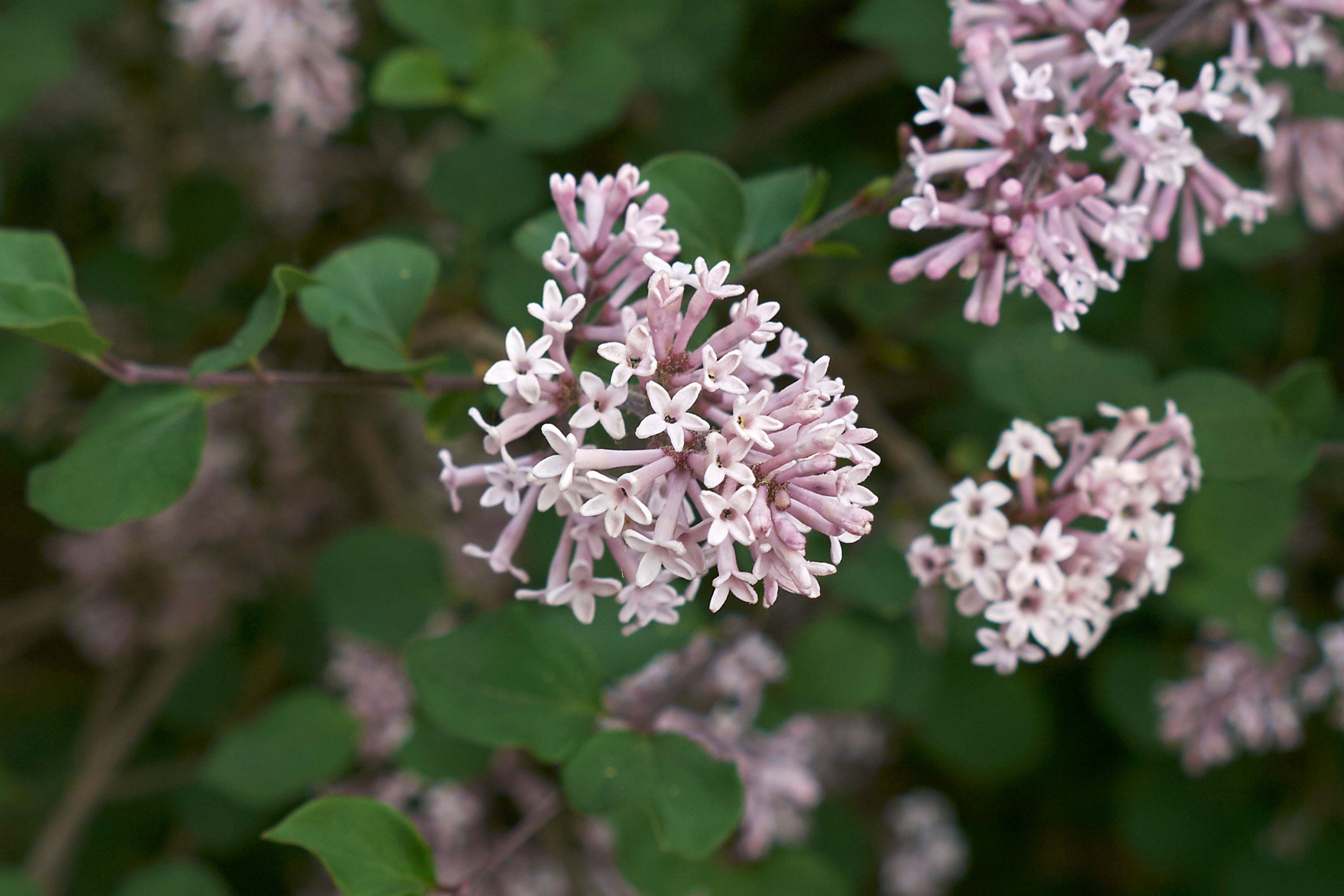Downy lilac
(Syringa pubescens)

Description
Syringa pubescens is a species of flowering plant in the lilac genus of the family Oleaceae, native to Korea and China (Gansu, Hebei, Henan, Hubei, Jilin, Liaoning, Ningxia, Qinghai, Shaanxi, Shandong, Shanxi, Sichuan). Growing to 6 m (20 ft) tall and broad, it is a substantial deciduous shrub with green leaves felted white beneath, and panicles of heavily scented, white-throated lilac flowers in early summer. The specific epithet pubescens means "downy", referring to the texture of the leaves. Three subspecies (formerly listed as separate species) are recognized: Syringa pubescens subsp. julianae - syn. S. julianae Syringa pubescens subsp. microphylla - syn. S. microphylla Syringa pubescens subsp. patula (also Syringa velutina) - syn. S. patula (Korean lilac, Manchurian lilac) The cultivar S. pubescens subsp. microphylla 'Superba' has gained the Royal Horticultural Society's Award of Garden Merit. According to some authorities Syringa meyeri C.K.Schneid. is a synonym of S. pubescens. The cultivar ‘Palibin’ has also won the AGM. However, the nearly palmate leaf venation of plants labelled S. meyeri is noticeably distinct from the pinnate venation of other forms of S. pubescens. Syringa (lilac) is a genus of 12 currently recognized species of flowering woody plants in the olive family (Oleaceae), native to woodland and scrub from southeastern Europe to eastern Asia, and widely and commonly cultivated in temperate areas elsewhere. The genus is most closely related to Ligustrum (privet), classified with it in Oleaceae tribus Oleeae subtribus Ligustrinae. Lilacs are used as food plants by the larvae of some moth species, including copper underwing, scalloped oak and Svensson's copper underwing. They are small trees, ranging in size from 2 to 10 metres (6 ft 7 in to 32 ft 10 in) tall, with stems up to 20 to 30 centimetres (7.9 to 11.8 in) diameter. The leaves are opposite (occasionally in whorls of three) in arrangement, and their shape is simple and heart-shaped to broad lanceolate in most species, but pinnate in a few species (e.g. S. protolaciniata, S. pinnatifolia). The flowers are produced in spring, each flower being 5 to 10 millimetres (0.20 to 0.39 in) in diameter with a four-lobed corolla, the corolla tube narrow, 5 to 20 millimetres (0.20 to 0.79 in) long; they are monoecious, with fertile stamens and stigma in each flower.
Taxonomic tree:







